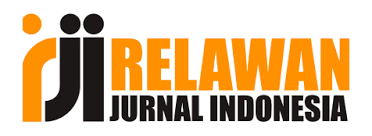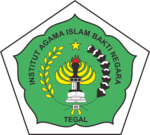“Canva” Sebagai Media Pembelajaran Terkini Pengganti Power Point
DOI:
https://doi.org/10.62490/latahzan.v14i1.320Keywords:
Learning Media, Power Point, CanvaAbstract
The rapid development of technology and information presents many alternative forms of learning media used. One of the learning media that has been too long or often used in learning is Power Point. But over time, the rapid development of technology and information can shift the existence of Power Point-based learning media. Where the media is too monotonous and less efficient in its use. One of the media that is present today, where its existence provides various ease of access and efficiency in its use, namely Canva media. This research uses the library research method by collecting data available in various existing sources. This research is expected to open insights, especially teachers in using learning media that is not monotonous and more up-to-date.
References
Catur Hadi Purnomo, Panduan Belajar Otodidak Microsoft Power Point 2007, (Jakarta: Mediakita, 2008).
Hilman, A. Penggunaan Media Ict Untuk Meningkatkan Hasil Belajar Siswa SMPN 3 Pagaden. Edutech.
Hujair AH dan Sanaky, Media Pembelajaran, (Yogyakarta: Safiria Insania Press, 2009).
Mestika Zed, metode Penelitian Kepustakaan, (Jakarta: Yayasan Obor Indonesia. 2008)
Nurhidayati, Media Power Point dan Pemanfaatannya dalam Proses Pembelajaran Bahasa Arab, Prosiding Konferensi Nasional Bahasa Arab V Jurusan Sastra Arab Fakultas Sastra Universitas Negeri Malang
Oemar Hamalik, Media Pendidikan (Bandung : Citra Aditya, 1989)
Pakpahan, Andrew Fernando dkk. Pengembangan Media Pembelajaran, (Medan, Yayasan Kita Menulis: 2020)
https://www.canva.com/id_id/membuat/powerpoint-alternatif/ diakses pada tanggal 12 Juni 2022
Pelangi, G. (2020). Pemanfaatan Aplikasi Canva Sebagai Media Pembelajaran Bahasa Dan Sastra Indonesia Jenjang SMA/MA. Jurnal Sasindo UNPAM
Tanjung, R. E., & Faiza, D. (2019). Canva Sebagai Media Pembelajaran Pada Mata Pelajaran Dasar Listrik dan Elektronika. VoteTEKNIKA: Jurnal Vocational Teknik Elektronika dan Informatika, 7(2), Hal 79-85.
Downloads
Published
How to Cite
Issue
Section
License
Copyright (c) 2023 Rizqi Abdillah

This work is licensed under a Creative Commons Attribution-ShareAlike 4.0 International License.
The copyright of the received article shall be assigned to the journal as the publisher of the journal. The intended copyright includes the right to publish the article in various forms (including reprints). The journal maintains the publishing rights to the published articles.
In line with the license, authors and any users (readers and other researchers) are allowed to share and adapt the material. In addition, the material must be given appropriate credit, provided with a link to the license, and indicated if changes were made. If authors remix, transform, or build upon the material, authors must distribute their contributions under the same license as the original.
















